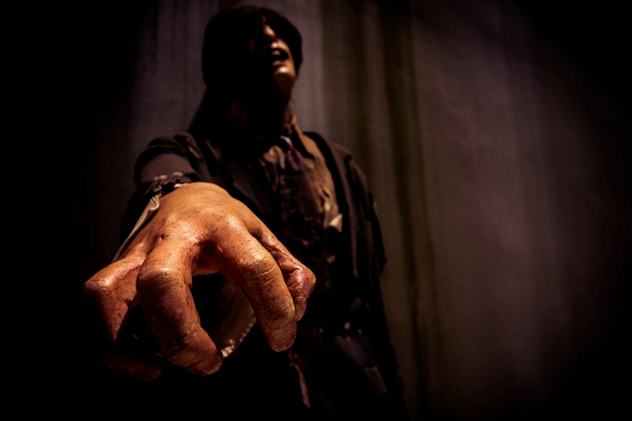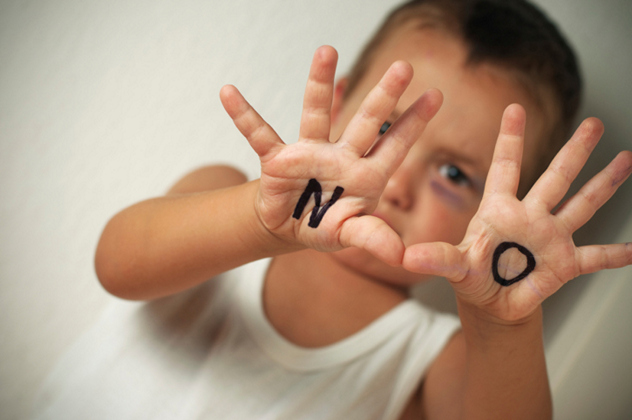 Mysteries
Mysteries  Mysteries
Mysteries  Creepy
Creepy 10 Scary Tales from the Middle Ages That’ll Keep You up at Night
 Humans
Humans 10 One-of-a-kind People the World Said Goodbye to in July 2024
 Movies and TV
Movies and TV 10 Holiday Movies Released at Odd Times of the Year
 Politics
Politics 10 Countries Where Religion and Politics Are Inseparable
 Weird Stuff
Weird Stuff 10 Freaky Times When Famous Body Parts Were Stolen
 Miscellaneous
Miscellaneous 10 Interesting Things Manufacturers Stopped Making and Why
 Gaming
Gaming 10 Funny Tutorials in Games
 History
History 10 Fascinating Little-Known Events in Mexican History
 Facts
Facts 10 Things You May Not Know about the Statue of Liberty
 Mysteries
Mysteries 10 Devastating Missing Child Cases That Remain Unsolved
 Creepy
Creepy 10 Scary Tales from the Middle Ages That’ll Keep You up at Night
 Humans
Humans 10 One-of-a-kind People the World Said Goodbye to in July 2024
Who's Behind Listverse?

Jamie Frater
Head Editor
Jamie founded Listverse due to an insatiable desire to share fascinating, obscure, and bizarre facts. He has been a guest speaker on numerous national radio and television stations and is a five time published author.
More About Us Movies and TV
Movies and TV 10 Holiday Movies Released at Odd Times of the Year
 Politics
Politics 10 Countries Where Religion and Politics Are Inseparable
 Weird Stuff
Weird Stuff 10 Freaky Times When Famous Body Parts Were Stolen
 Miscellaneous
Miscellaneous 10 Interesting Things Manufacturers Stopped Making and Why
 Gaming
Gaming 10 Funny Tutorials in Games
 History
History 10 Fascinating Little-Known Events in Mexican History
 Facts
Facts 10 Things You May Not Know about the Statue of Liberty
10 Incredibly Insane Cases Of Mass Hysteria
Mass hysteria can hit almost anywhere, so long as there is a group of people ready to fall into a collective delusion. While it’s easy to look back in hindsight and laugh at the whole thing, it’s an entirely different world for those involved. Mass hysteria (like the ones listed below) is a lot like a natural disaster—devastating and leaving behind a heck of a mess to clean up.
10Meowing And Biting Nuns

During the Middle Ages, a baffling case of mass hysteria gripped an undisclosed convent in France. The incident started with one nun meowing like a cat, with the rest of the convent soon following. The group would meow together for many hours at specific points during the day. The incessant caterwauling baffled and infuriated residents of the surrounding neighborhood. The nuns finally ceased their meowing after soldiers, who were sent to the convent, threatened to whip them with rods.
A similar case also gripped a convent in Germany, when a nun began biting her companions. Subsequently, it triggered a biting epidemic that spread to other convents and nunneries and reached as far as Rome. The nuns’ bizarre behavior could be attributed to the period’s intense belief in the supernatural. The nuns—with their cloistered lives and rigid religious expectations—were the ones most vulnerable to episodes of hysteria.
9The Great Fear

At the start of the French Revolution, a general panic struck peasants in the countryside, after they heard rumors of a supposed aristocrat plan to use brigands to plunder their villages and fields. Paranoia filled the air as vagabonds—and even animal herds—were mistaken for brigands. To protect themselves, villagers formed armed militias—a move that only exacerbated the problem. The militias themselves were often mistaken for brigands by neighboring villages, when they happened to patrol nearby. Some militias further added to the chaos by attacking and burning down houses and fields owned by the nobles.
Only when it became clear that there was no such aristocratic plot did the peasants calm down. The entire episode left the ruling class so fearful of the peasants that they hurriedly enacted a series of reforms to appease them. In effect, the Great Fear became the catalyst that abolished France’s old social order—a move that was felt across the world.
8The Indian Alien Attacks Of 2002

Just a year after the infamous Monkey Man of Delhi, another mysterious being came into Indian limelight. Known as the “muhnochwa,” or “face scratcher,” the being supposedly originated in the northern Indian state of Uttar Pradesh, and was said to leave burn or scratch marks on the faces and extremities of its victims. It also allegedly caused the deaths of half-a-dozen people, which caused villagers to form vigilante groups and riot against what they believed was the lack of police protection. The unrest became so pervasive that the national government had to step in and send agents to investigate the case.
Before the investigation, there were bizarre theories about the muhnochwa’s origins. One of these was a police belief that the muhnochwa was an “insect-like drone” used by Pakistani operatives to spy on the people. However, scientists who investigated the case explained that the dreaded muhnochwa was nothing more than ball lightning—a natural phenomenon that often occurs during long periods of drought and can burn upon contact with human skin.
7Head-Hunting Hooplas

Similar to the creepy Japanese urban legend of using human sacrifices as building material was the belief in some remote Malaysian and Indonesian areas that their governments had sanctioned bounty hunters to search for heads to be used as cornerstones for new buildings or bridges. Panic would reach its height whenever a new structure was being constructed nearby. Indonesia’s first Prime Minister, Soetan Sjahrir, recounted how such rumors paralyzed his village in Banda, in 1937. Streets were empty as people barricaded themselves at home as early as 7:00 PM. Stories of strange sounds and sightings only added to the paranoia; a few storytellers even shared their alleged encounters and escapes from the bounty hunters.
Another scare occurred in 1979 on another island, this time in Borneo. Villagers became paranoid after rumors that the government was kidnapping people in order to strengthen a nearby bridge. A curfew was imposed, the local school closed down, and patrols were formed. To experts who analyzed these cases, head-hunting scares are essentially a “diving rumor“—one that keeps appearing from time to time and reflects the uneasy ideological relationship between tribes and their government.
6Louisiana Twitching Epidemic Of 1939

During the springtime of 1939, one school in Louisiana experienced a massive case of twitching among its female students. The epidemic began after one girl experienced uncontrollable twitching in her right leg, during the school’s annual homecoming dance. The girl’s twitching attacks worsened considerably over the coming weeks; less than a month later, her female friends and classmates also began to have twitching episodes. The arrival of frantic parents, who took their children away, only fueled student fears of the twitching disease and caused a massive stampede shortly thereafter. It took a full week for things to finally calm down.
Just what caused the twitching? Was it something in the water? In the air? For investigators who studied the case, it was nothing more than attention seeking by a lovelorn girl. Patient zero—a senior named Helen—was a poor dancer and constantly worried that she might lose her boyfriend to a more skillful freshman. They concluded that Helen’s subconscious solved the problem by producing a painful twitch in her leg, which also enabled her to be excused from her much-loathed dance classes. A case of killing two birds with one stone.
5The Kissing Bug Scare Of 1899

Despite its romantic moniker, the “kissing bug” was anything but. In fact, thanks to one unscrupulous reporter, the kissing bugs managed to achieve nationwide notoriety in the United States in 1899. James McElhone, a reporter with the Washington Post, tagged the kissing bugs as the main culprits behind an increasing number of suspected insect bites on people’s lips. He wrote a sensational story about how the victims had been “badly poisoned” and how the kissing bugs were threatening to start a new plague.
Needless to say, the story set off a series of panics across the country. Soon, all cases of wounds on the face were attributed to the kissing bugs. One woman even described her attack as more akin to a vampire’s bite than an insect’s. Even beggars roamed the streets wearing bandages, while a few opportunists claimed the kissing bug sickness put them out of work, and they thus needed financial assistance. Curiously, no actual kissing bug was ever caught in the act; entomologists eventually dismissed the whole thing as nothing more than “a newspaper epidemic.”
4The Loudun Possessions Of 1632

One of the most famous cases of mass possession in French history happened, as you might guess, in a convent full of nuns. The supposed possessions in Loudun began in 1632. Nuns of the Ursuline religious order claimed that their parish priest and religious director, Urban Grandier, had ordered demons to possess them in order to make them more pliant to his sexual overtures. The resulting exorcisms of the nuns and trial of Grandier became so sensational that thousands of people often attended. They even attracted the attention of King Louis XIII and Cardinal Richelieu. Two years later, Grandier was found guilty and sentenced to a fiery death. Justice served, right?
Actually, the possessions themselves were just a well-calculated plot, designed to knock Grandier off his high horse. The priest—who was indeed handsome—had acquired many enemies throughout his tenure in Loudon, either for his arrogant behavior, libertine lifestyle, or suspected affairs with women. Among his opponents were other priests and bishops, who saw the case as the perfect opportunity to discredit Grandier. The head of the nuns, Jeanne des Anges, also capitalized on the attention to further her own career in the convent. Even the royal interest in the case had political undertones (Grandier had offended the cardinal at one point). Whatever the exact reason was, Grandier’s death did not stop the possessions, which continued until 1637 and became something of a circus attraction.
3Phantom Pregnancy Panic

An extremely rare form of mass hysteria gripped the patients of a London psychiatric ward in the early 1970s. It all started when a 17-year-old schoolgirl, named Louise, confided to her fellow patients that she was expecting a baby. This was, of course, false; prior to her admission, Louise had a history of attention-seeking behavior and lived a very promiscuous lifestyle. Her condition only worsened after she learned of her best friend’s pregnancy and subsequent death after childbirth. That traumatic experience, experts concluded, led her to experience phantom pregnancy symptoms—either as a personal massive fear of the consequences of unprotected sex, or as a form of identifying with her deceased best friend.
Whatever the case, Louise’s incredibly convincing personality was enough to trigger a pregnancy panic among the rest of the female patients. A few days after Louise revealed her supposed pregnancy, other patients (including one with no history of sexual activity) became fearful that they too were pregnant and caused a ruckus in the wards. Only through constant reassurance that they were never pregnant in the first place did the women finally calm down.
2The Contaminated Coca-Cola Scare Of 1999

The most serious threat to Coca-Cola’s virtual monopoly on Europe began in June 1999, when more than 100 students in Belgium reportedly fell ill after drinking the beverage. The subsequent investigation—coupled with some inept PR handling—eventually cost the company a cool $200 million and a several-day ban in other European countries.
While examination of the tainted batches did show contamination (“bad” carbon dioxide and phenol were found), two Belgian scientists speculated that the tainted products yielded too small an amount to cause real damage; for them, the incident was mostly “a case of mass hysteria,” fueled, in part, by a prior scare of mad cow disease and dioxin-tainted animal products. A separate investigation by Belgium’s High Hygiene Council, in March of 2000, corroborated those claims and stated that most of the victims experienced a “mass psychogenic illness.”
1The Bin Laden Itch

In a period spanning October 2001 to June 2002, thousands of primarily elementary-aged students were being afflicted with a skin rash that appeared with no known cause. The rash would last from a few hours up to two weeks, and then disappear as mysteriously as it came. In light of the 9/11 attacks and the anthrax scare, was this a successful case of bioterrorism?
To answer that question: yes and no. While rashes have always remained endemic to schools, fears of a bioterrorist attack made students pay more attention to their skin, and also prompted school nurses to report a higher number of cases than usual. Officials of the Centers for Disease Control and Prevention also noted that a few students deliberately rubbed sandpaper on their skin in an attempt to shut down a school. The so-called “Bin Laden Itch”—though ultimately non-existent—was hugely successful in sparking a mass hysteria.
+Day Care Ritual Abuse Hysteria

Remember the McMartin case? The one that became one of the most expensive—and ultimately useless—trials in American history? That was just the tip of the iceberg in what would be known as the day care ritual abuse hysteria of the 1980s–90s, wherein day care workers were accused of engaging the children in all manners of satanic ritual abuse. Fantastic claims included children being forced to watch live executions, rape, torture, and so on. Virtually all the accused were later exonerated—but not before spending a good amount of time in jail and having their lives essentially ruined.
Just what caused this hysteria in the first place? The answer could be found in the parents themselves. As it became more common for both husband and wife to work outside their home, they had to entrust their children to day care centers—a move that was likely to increase their anxiety and guilt. Day care workers, in effect, became the perfect scapegoats for the parents, helping them ignore their own shortcomings. Add to that the false testimonies, shamelessly coerced out of the children by heavy-handed interrogators, and there you have it—the perfect recipe for the 20th century equivalent of the medieval witch hunt.
Marc V. is always open for a conversation, so do drop him a line sometime.




![11 Lesser-Known Facts About Mass Murderer Jim Jones [Disturbing Content] 11 Lesser-Known Facts About Mass Murderer Jim Jones [Disturbing Content]](https://listverse.com/wp-content/uploads/2020/09/jonestown2-copy-150x150.jpg)



